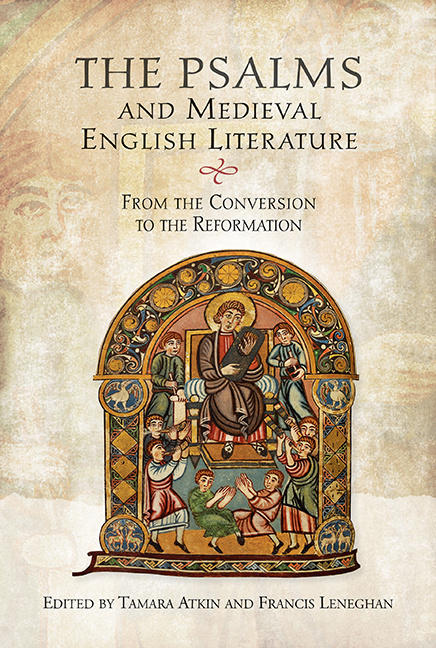Book contents
- Frontmatter
- Contents
- Figures
- Contributors
- Preface
- Acknowledgements
- Abbreviations
- Miscellaneous Frontmatter
- Introduction A Case Study of Psalm 50.13 in Old and Middle English
- I Translation
- 1 Some Anglo-Saxon Psalters and their Glosses
- 2 The Eadwine Psalter and Twelfth-Century English Vernacular Literary Culture
- 3 ‘In eching for the beste’: the Fourteenth-Century English Prose Psalter and the Art of Psalm Translation
- 4 The Wycliffite Psalms
- 5 Rolle's English Psalter and the Possibilities of Vernacular Scriptural Commentary
- II Adaptation
- III Voice
- Index
5 - Rolle's English Psalter and the Possibilities of Vernacular Scriptural Commentary
from I - Translation
Published online by Cambridge University Press: 09 May 2017
- Frontmatter
- Contents
- Figures
- Contributors
- Preface
- Acknowledgements
- Abbreviations
- Miscellaneous Frontmatter
- Introduction A Case Study of Psalm 50.13 in Old and Middle English
- I Translation
- 1 Some Anglo-Saxon Psalters and their Glosses
- 2 The Eadwine Psalter and Twelfth-Century English Vernacular Literary Culture
- 3 ‘In eching for the beste’: the Fourteenth-Century English Prose Psalter and the Art of Psalm Translation
- 4 The Wycliffite Psalms
- 5 Rolle's English Psalter and the Possibilities of Vernacular Scriptural Commentary
- II Adaptation
- III Voice
- Index
Summary
At some time around 1348, the Yorkshire hermit Richard Rolle added to his already extensive oeuvre of religious writing in Latin and English a complete English translation of and a commentary on the Psalms. A prefatory poem appended to Oxford, Bodleian Library, MS Laud misc. 286, fol. 1r-v, an early fifteenth-century copy, states that the English Psalter, as modern critics refer to the work, was written for Rolle's spiritual protégé, Margaret Kirkby. The work involved providing the Latin text, usually appearing in the manuscripts in a larger, more formal script, then a vernacular translation after each verse, often distinguished by underlining, followed by an explanatory gloss. Containing Latin and English texts as well as English explication, the English Psalterseems to have been intended as a devotional aid for her and other unlettered solitaries, designed so ‘that they that knawes noght latyn, by the ynglis may com til mony latyn wordis’, as Rolle himself states in his prologue to the work. We know that he expected a wider circulation, as the prologue also contains preemptively defensive remarks directed at the ‘enuyous’ men whom he expects will question the authority of his doctrinal knowledge (p. 5), but he could not have anticipated the ultimate fortunes of his work. Several decades after his death in 1349, the English Psalterwas taken up by a group of revisers who held Wycliffite views, who produced three successive recensions, known as RV1, RV2 and RV3. While the popularity of the work is clear — some fifty manuscripts of the work survive in one version or another — this broad circulation represents a complex history of reception, revision and dialogue more than it attests to univocal acclaim.
This chapter will focus primarily on what evidence suggests is a relatively early part of that reception by discussing aspects of the Wycliffite revisions before turning to later evidence of the text's fortunes after these interventions. This late fourteenth- and early fifteenth-century transmission occurred within a complex cultural field in which the possibilities of vernacular scripture and its interpretation became a politically-freighted subject of experimentation and debate. Rolle's English Psalterand its revisions form a distinctive part of this history in part because they represented forms not solely of vernacular scripture, but also of vernacular scriptural commentary — of interpretive apparatuses in English that might guide vernacular reading.
- Type
- Chapter
- Information
- The Psalms and Medieval English LiteratureFrom the Conversion to the Reformation, pp. 149 - 170Publisher: Boydell & BrewerPrint publication year: 2017

